Yoav Bar guided tour and the architect Walid Karkabi - head of the restoration team at the Haifa Municipality - spoke about the systematic destruction of Arab neighborhoods in Haifa by the Israeli authorities since the Nakba and about the attempts to preserve what has remained of the structures. Janet Matar, a 74-year-old Palestinian woman from Haifa, related her memories of Haifa before the Nakba and the expulsion of Palestinians from the city.
The tour began at Sahat al-Hanatir, a well-known place in Haifa called today Paris square. Before the Nakba Sahat al-Hanatir was a central square with markets and a bus station. People could take a but from there to Beirut. We hung a sign near the square with the name of the neighborhood that existed there before the Nakba, Harat al-Kanayis ('the neighborhood of churches'). Then we passed by the few remaining ruins of the city wall built by Daher al-Umar, where we came to the al-Jarina mosque. The mosque was shelled in 1948 and its turret (minaret) was destroyed. We stopped by the 'Small Mosque' and al-Istiqlal Mosque ('Independence Mosque'), the Faysal Pillar, the al-Pasha bath and the Istiqlal cemetery. The last stop was to St. Maria Church, which was closed for many years following the Nakba and was reopened later. After the occupation of the city, the Israeli authorities replaced almost all names of the streets of Haifa with Hebrew names, erasing the Palestinian Arab identity of the city. We posted a sign at one of the streets of the Wadi al-Salib neighborhood bearing its original name before the Nakba: al-Iraq street.
Click here to see a short film about the tour
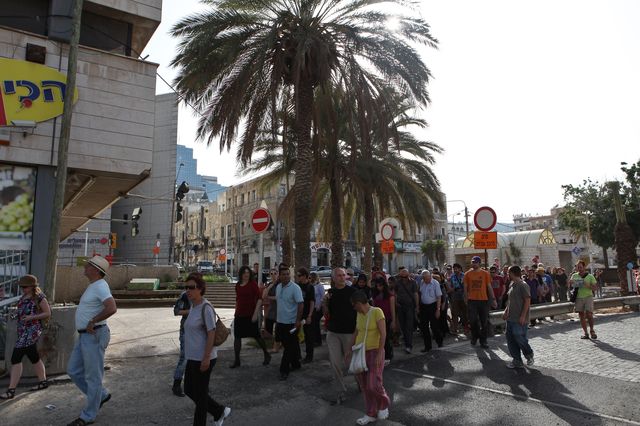
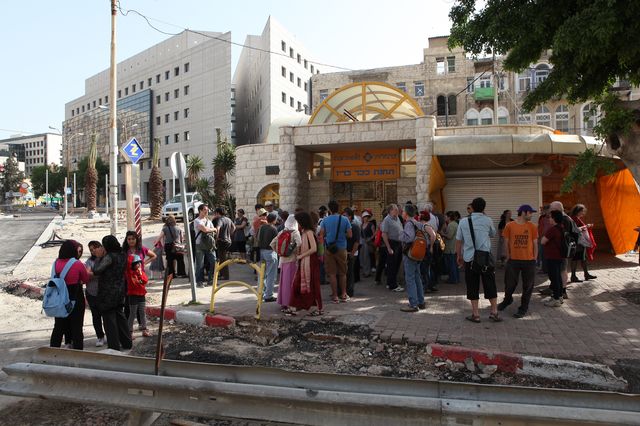
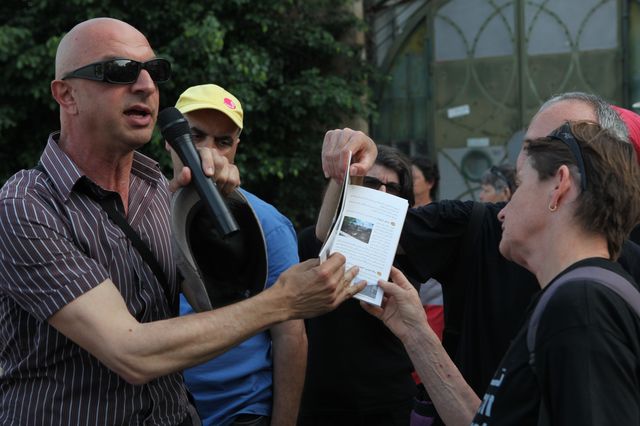
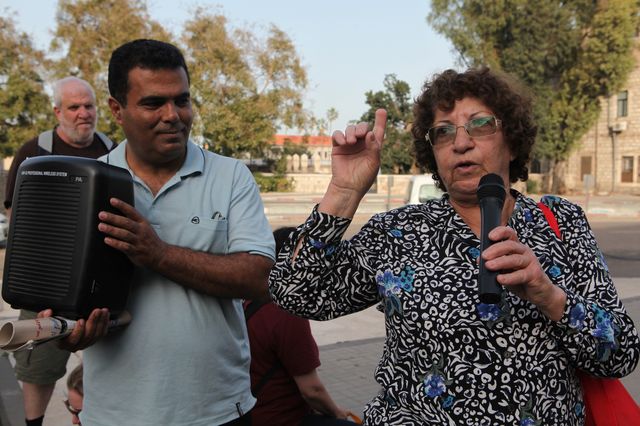
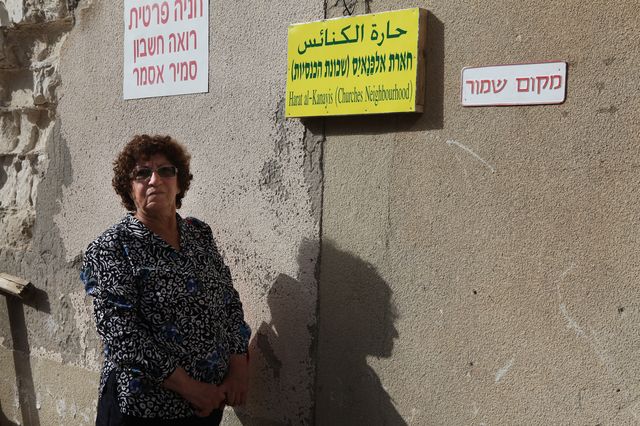
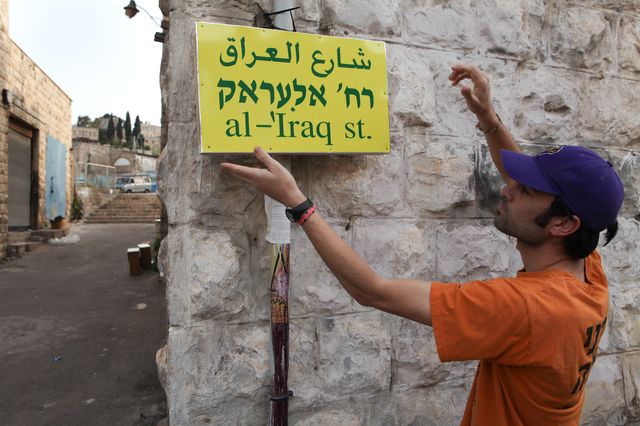
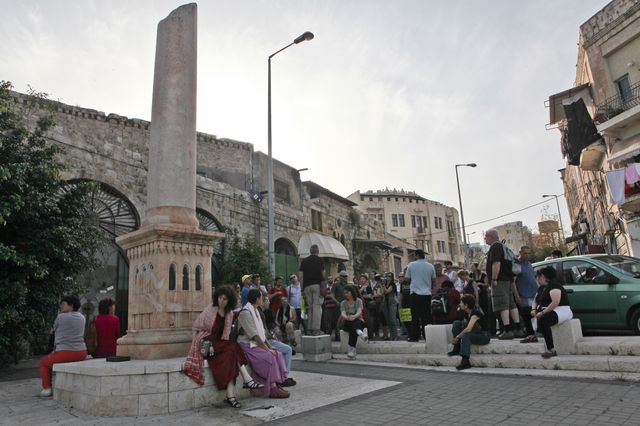
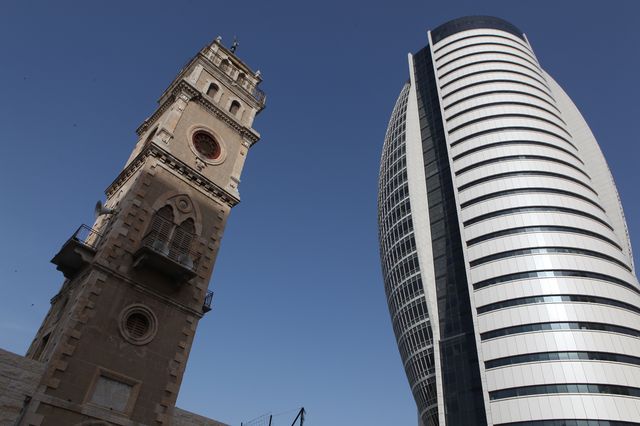
-------
Photos by Mati Milstein


